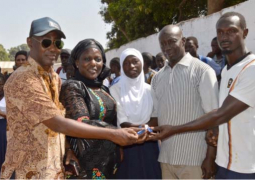Recently the ministry, in collaboration with the World Health Organisation (WHO), organised a two-day training session and forum on the implementation of HiAPs.
The forum, held at the National Malaria Control Programme office in Kanifing, sought to promote the implementation and evaluation of HiAPs and encourage engagement and collaboration across all institutions of the country’s public and private sectors. It was also aimed at facilitating the exchange of experiences and lessons learned in the promotion of regional and global collaboration on HiAPs.
HiAPs, though it has been applied by nations like the US and other countries around the world some years ago, is somehow a new concept in The Gambia; hence it deserves more promotion or explanation for it to be better understood in our society.
HiAPs is a concept that is very essential to government’s planning, because it is something actually concerning our health and well-being.
The concept takes into consideration the challenges posed by medical interventions, especially as regards implementation of new medication and its application.
According to our health department and the World Health Organisation (WHO), HiAPs is an approach to public policies, across sectors, which systematically takes into account the health implications of decisions.
The new policy is designed to improve accountability of policymakers for health impacts at all levels of policymaking. It also includes an emphasis on the consequences of public policies on health systems, determinants of health and well-being. It as well contributes to sustainable development.
HiAPs is a practical response to challenges in the implementation of health promotion interventions, and provides a framework for a regulation that rebalances the distortion, and transparently addresses conflicts of interest among sectors.
HiAP was created by the Public Health Institute, the California Department of Public Health, and the American Public Health Association in response to growing interest in using collaborative approaches to improve population health by embedding health considerations into decision-making processes across a broad array of sectors.
It is considered a guide for state and local governments, according to the California Department of Public Health, which states that it draws heavily on the experiences of the California Health in All Policies Task Force and incorporates information from the published and gray literature and interviews with people across the country.
So it is fundamental that our nation The Gambia get to know more about HiAPs via sensitization forums and other avenues, since the promotion of health equity is essential to sustainable development and better quality of life and well-being for all.
“You can’t have public health without working with the public sector. You can’t have public education without working with the public sector in education.”
Paul Farmer
Read Other Articles In Article (Archive)



